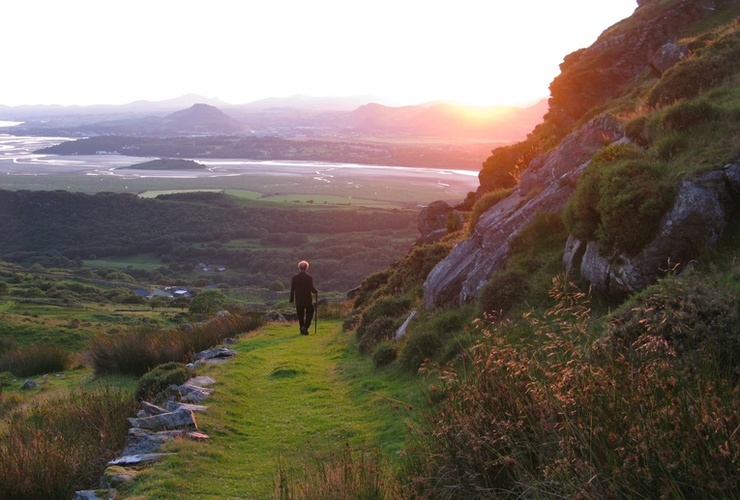Wild Words: On the Way Back to Where There is Nothing
Renowned writer and climber Jim Perrin shares some new writing

On the Way Back to Where There is Nothing
(Tao Te Ching, xiv)
Years ago I walked daily on Traeth Bach - the estuary of the Afon Dwyryd in Eryri - usually with my neighbour and friend, the sculptor and writer Jonah Jones (1919-2004). This estuary for me is one of the primal places.
It’s not obviously “wild”. A rail and road bridge, beneath which flooding tides boil and swirl, mark its eastern limit. The northern shore is the wooded peninsula of Aber Ia, with its major tourist attraction, the Italianate fantasy village of Portmeirion. The A496 to Harlech, burdened with holiday traffic, traces round southerly.
Yet this estuary is as “wild” – whatever that fashionable word may mean – as any place I’ve been in 60 years of travelling marginal lands, initially around Britain, later of the globe. Differently wild, perhaps; diminishingly wild I fear: but there’s a quality about Traeth Bach that has enthralled me for decades.
It derives from intimate knowledge of place and its elemental affect. I’m not talking here of a landscape those eighteenth-century adherents steeped in Edmund Burke and the cult of the Sublime would have admired. Traeth Bach (literally “the little strand”) is simpler than that. It has an absolute simplicity – sky, sea, sand, distant surrounding hills – that acts as magnet and tabula rasa for a mind seeking clarity.
On my walks with Jonah we’d slip down on to the sands by the abandoned slate quay steps near Borthwen. We’d ford the inshore channel and head out towards the ancient pilgrims’ church of Llanfihangel y Traethau, a mile away above the farther shore.
Emptiness accentuates distance. Within a hundred yards you’re “environ’d with a wilderness of sea” (Titus Andronicus). We’d trek in a great arc to the wide channels where precise knowledge of tidal flow became crucial. The sea surges across these sands with astonishing velocity and force, channels become deep and flooding black torrents against which you could not swim.
But that fear is adrenaline-inducing; decomposed adrenaline is chemically almost identical to LSD; our trips here were distinctly trippy. One clear St. David’s Day, far out at slack water we waded knee-deep along sinuous, rippling submarine sand-bars in translucent turquoise water, heading for Clogwyn Melyn. It felt so remote – few places so isolated as on those sands between ebb and flow, senses attuned to sudden, perilous turn of tide.
Excitement was not its chief allure. Here were natural riches. The channels teemed with huge flocks thousands-strong of wigeon, teal, pintail. Sandpiper and scurrying sanderling animated the tideline. From draining sandbanks came a yapping Pekinese clamour of geese. Clouds of curlews spiralled above, descanting, their song tumbling all around us in ecstatic fall.
There were eider duck, scoter, shelduck, shoveler, Slavonian and great crested grebe, red-throated and great northern divers, mergansers, over-wintering swans, golden plover, redshank, lapwing – birds of moor and mountain in their winter retreat.
There was plenitude, distance, a kind of solitude. Also immense fragility, to which selfish humanity pays scant regard…
---
About the author
Jim Perrin has won the Boardman Tasker prize for mountain literature twice and is a regular contributor on travel, mountaineering, literature, art and the environment to a number of newspapers and magazines including The Guardian and The Great Outdoors magazine. A respected climber he has developed many new routes, particularly on the Derbyshire gritstone outcrops, in North Wales and on the sea cliffs of Pembrokeshire.
---
The Trust is dedicated to the experience, protection & repair of wild places.
Celebrate our Wild Words month with this special offer: 25% off for your first year of John Muir Trust membership* if you join us during October 2019. Use the promo code: WILDWORDS (*Ts & Cs apply).
Image credit: Jim Perrin - Y Rhinogydd and looking west across the estuary from above Caerwych